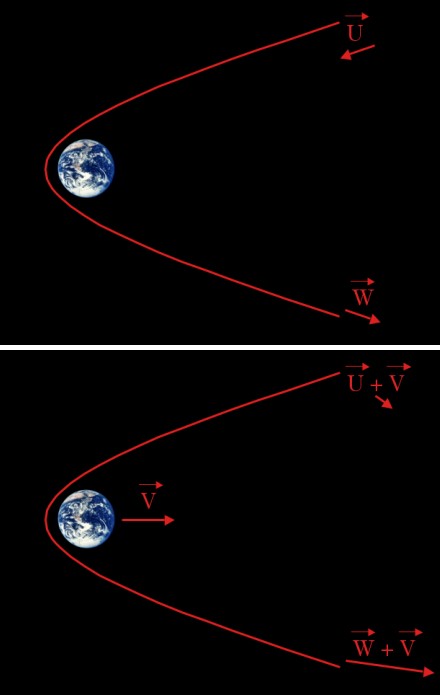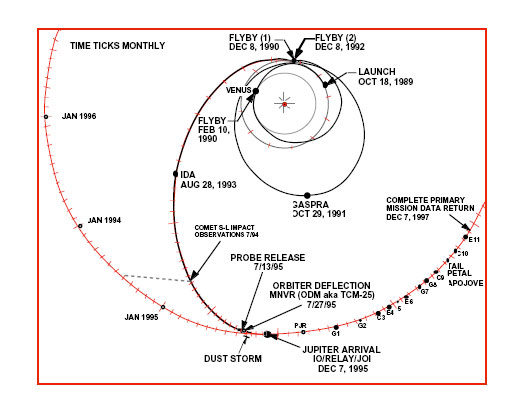Physicist: A gravitational slingshot (or “gravity assist”) is a slick way to pick up speed using a moving planet’s gravity. What’s confusing about the gravitational slingshot is that, from the point of view of the planet, the object in question comes flying in from space with some amount of kinetic energy, and leaves
with the same amount of kinetic energy (conservation of energy). So how can it speed up?
Here’s the slickness: the Galilean Equivalence Principle. The GEP states that the laws of physics work the same whether you’re moving (at a constant speed) or not. So if you look at the exact same situation from another perspective, where the planet is moving, you’ll notice that the incoming and outgoing speeds are different.

An object that passes by a stationary planet will approach and leave at the same speed (but in different directions of course). However, if the planet is moving, then the incoming and outgoing speeds are different.
Here’s voyager 1 and 2 doing their slingshot thing.
The total change in velocity, , experienced by the slungshot object is
, where
is the incoming speed (from the planet’s perspective), and
is the angle between the incoming and outgoing trajectories (again from the planet’s perspective). So in general, a sharper angle yields a bigger boost.

The course of the Galileo probe. After it's initial launch it did three slingshots, around Venus, Earth, and Earth again, to gain enough speed to get to Jupiter's orbit.
A slingshot increases the kinetic energy of the object in question by decreasing the kinetic energy of the planet. But don’t worry too much, an ant pushing a tricycle is having about one hundred quadrillion (1017) times more effect. Gravitational slingshots are used primarily for the probes we’ve sent to the outer solar system. It lowers the fuel costs a lot, but all the wandering around makes the trip quite a bit longer.







Pingback: Q: Can we build a planet? « Ask a Mathematician / Ask a Physicist
Pingback: Crowdsourcing Astronomy: DISCOVER Readers Fight Asteroid Threat - PEOPLES MEDIA 24
Pingback: Q: If the Sun pulls things directly toward it, then why does everything move in circles around it? | Ask a Mathematician / Ask a Physicist
Pingback: Q: Why are many galaxies, our solar system, and Saturn’s rings all flat? | Ask a Mathematician / Ask a Physicist
Pingback: Q: What is the state of matter in deep space? | Ask a Mathematician / Ask a Physicist
Pingback: There’s something new under the Sun! | Ask a Mathematician / Ask a Physicist
Pingback: Q: Is reactionless propulsion possible? | Ask a Mathematician / Ask a Physicist
Pingback: Q: Asteroid mining. Why? | Ask a Mathematician / Ask a Physicist